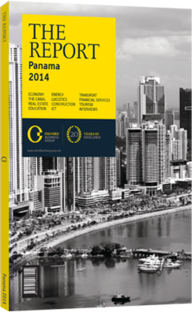OBG talks to Nicolás Ardito Barletta, Director-General, National Centre for Competitiveness

Interview: Nicolás Ardito Barletta
How can Panama diversify while still leveraging its advantage in international connectivity?
NICOLAS ARDITO BARLETTA: I think it is important to note that the cluster of industries built on connectivity is already diverse. The cluster includes 26 activities that do not all move within the same business cycle. As a small market economy, our growth will be export-driven. As a result of our connectivity, 81% of GDP is services and 80% of exports are services. The export of services moves somewhat differently than that of commodity exports in the world business cycle. While commodity prices fluctuate considerably, service prices and volumes do not. We have not seen negative growth in the past 30 years, including during the 2008-09 financial downturn.
A banking centre, connected with the world markets through the London Interbank Offered Rate (LIBOR), also offers a cushion, as there is no reason for money to move abruptly in and out of the country. We do not devalue, we are open and the interest rate fluctuates with LIBOR. Our balance of payments account tends to be stable.
Panama does have other sectors, which make up 19% of GDP. These sectors include: agribusiness, which we can further develop through the use of technology and choice of markets; tourism, which already ranks as a revenue earner along with the canal; fisheries, a mainstay of exports for 40 years; and mining, which is just opening up, with copper mining about to begin with an investment of around $5bn over the next five years. We have two locations for mining activities with large deposits of ore. Diversification beyond the cluster is important, and we have sufficient opportunities. With the right policies, these areas can bear fruit in the next few years.
Are the current levels of government investment and growth sustainable?
ARDITO BARLETTA: There are two main drivers of growth: investment on the supply side and exports on the demand side. Exports have been growing at about 14.5% over the past 10 years, which has contributed immensely to our 8% GDP growth rate. Foreign investment per capita is one of the highest in Latin America, with both public and private local investment added to that. The economy should be able to sustain a high level of public investment, perhaps not as ambitious a programme as we have seen in the past five years, but that may not be needed.
The canal expansion investment is indeed contributing considerably to growth, but it will also add to productivity and enhance the whole cluster of industries. Public investment, mostly in infrastructure such as the metro and highways, will add incentives for businesses to continue to invest and develop.
With a relatively stable world economy, foreign and local investment should continue along similar lines.
I think Panama is positioned to continue growing between 5% and 8% per year if we put in place the right policies and legislation.
What are the main challenges ahead?
ARDITO BARLETTA: Training and education. We need to improve quality across the board. We have universal education, but the quality is lacking. Considerable efforts are being made and it needs to be sustained for the long term. We will be importing labour, but we also need to invest in our own people.
Secondly, we need to continue developing the right kind of infrastructure, looking at cost benefit analyses. Thirdly, governance and institution building is very important. We need to continue securing legal rights and strengthening the judiciary’s independence.
Legislation should be more user friendly. We need more regulation, but at the same time it should not hinder our open economy. Fourthly, we need to improve government services and the civil service by making it more professional. Lastly, we must reduce poverty while encouraging the growth of entrepreneurialism and small and medium-sized enterprises.
You have reached the limit of premium articles you can view for free.
Choose from the options below to purchase print or digital editions of our Reports. You can also purchase a website subscription giving you unlimited access to all of our Reports online for 12 months.
If you have already purchased this Report or have a website subscription, please login to continue.

